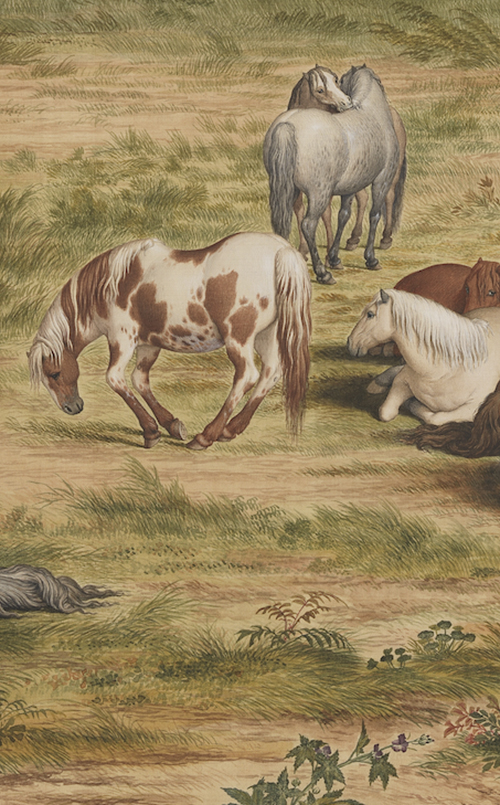Giuseppe Castiglione achieved marvelous results in painting during the Yongzheng reign (1723-1735), his monumental masterpiece of "One Hundred Horses" being completed then. This long handscroll depicts a hundred steeds by a riverbank, the horses appearing in different manners and poses. Some are at leisure and peace, while others romp with energy, making this painting of a hun-dred horses exceptionally varied.
The handscroll begins at the right with two stately pines trees filling the surface, skillfully setting the stage for scenery that is nearly eight meters long. With a consistent horizon and height maintained throughout, Giuseppe Castiglione presents horses being led to pasture on the plains, a horse being bathed by the bank, horses crossing water, and a vast and deep vista that present fascinating views of these majestic animals. According to archives from the Qing imperial household, Castiglione was ordered to paint a handscroll of one hundred horses in the third lunar month of the Yongzheng emperor's second year (1724), serving as documentary evidence for the production of this scroll. For Castiglione and other artists, the actual process of painting for the Qing court was quite complicated, including making a preparatory drawing for imperial review before the final version could be done. Fortunately, the draft for "One Hundred Horses" still survives. Borrowed from the Metropolitan Museum of Art in New York, audiences can now compare it with the final version in the National Palace Museum, offering an ideal opportunity to study the mechanism of academic painting at the Qing court.


